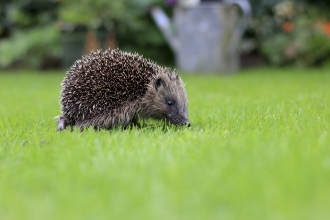
Hertfordshire's State of Nature report brings together the story of our county's wildlife over the past 50 years. The report assesses over 7,500 different species and how their numbers have changed between 1970 and 2020. The results are based on over 2.8 million species records held by the Herts Environmental Records Centre. Taking inspiration from the national State of Nature report, first published in 2013, this report is the first of its kind to focus in such detail at Hertfordshire's wildlife and wild places.

Of 10,863 species recorded in Hertfordshire in the last 50 years, 7,696 species (over 70%) were able to have their conservation status assessed. Of those, 1,524 species (20% of those assessed) were identified as being Hertfordshire Species of Conservation Concern - extinct or threatened in a Hertfordshire context.
The report looks at both habitats – such as woodlands, grasslands and wetlands – and species to give a clear picture as to how wildlife has changed in the county over the last 50 years.
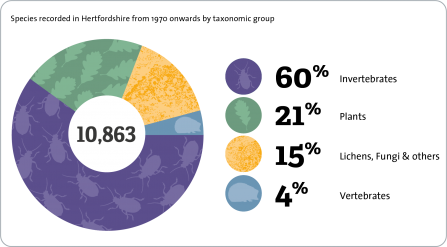
For 25 species, Hertfordshire is a particularly important place within the UK and we have a special responsibility to look after those species here because our local actions could have a significant impact on the UK population as a whole.
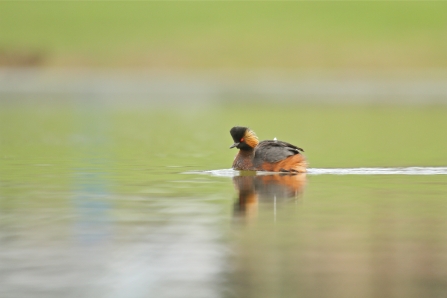
Black-necked grebe (c) Luke Massey/2020VISION
These species include the black-necked grebe, of which Hertfordshire boasts the only breeding colony in southern England. The pasqueflower, the county flower of Hertfordshire, can only be found on a handful of sites across the whole country. Therfield Heath, near Royston, has the largest colony of these flowers in the UK.

Hertfordshire boasts a variety of habitats and different landscape characters. Chalk soils dominate the north of the county. The east is characterised by chalk rivers and internationally important wetlands. The most wooded part can be found in the south as well as our remaining heathlands and acidic grasslands. The west of the county also holds a number of our chalk rivers and includes the Chilterns designated Area of Outstanding Natural Beauty (AONB).
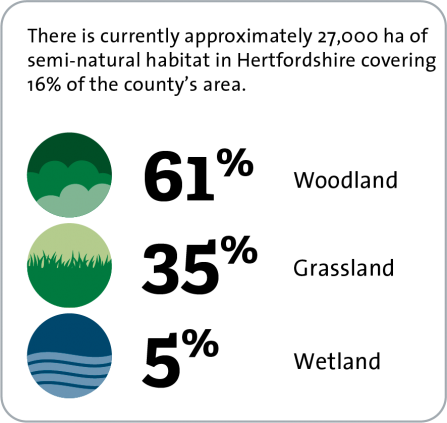
Sitting on the edge of London, Hertfordshire has seen a large amount of urbanisation. Much of the remaining rural land area is intensive agriculture. Major roads and other transport networks physically divide and fragment Hertfordshire’s habitats and golf courses make up five times the land area of the Trust's nature reserves combined.
The majority of Hertfordshire's Species of Conservation Concern identified in the report were associated with the three main semi-natural habitats of woodland, grassland and wetland. Only 7% were associated with urban and farmland habitats combined.
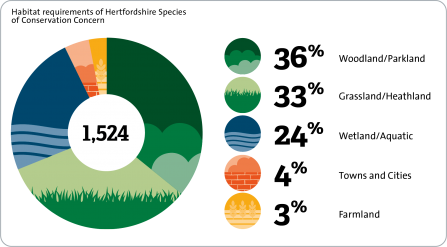
Nature is a vital part of our physical and mental wellbeing and creating a wilder Hertfordshire should be important for everyone.

Grasslands and heathland are some of Hertfordshire's most threatened habitats. Today, there just 13 hectares of heathland remaining in Hertfordshire. Across the UK, 97% of semi-natural grasslands have been lost since the 1930s with a similar pattern seen in our county. There have been more extinctions and a greater number of species declines in grasslands and heathland than any other habitat.
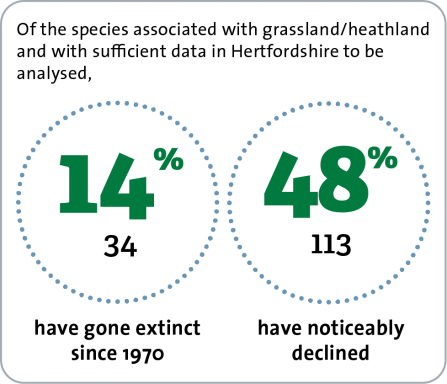
The beautiful, iridescent green tiger beetle, eared willow and basil thyme are only some of the 113 species that have declined in these habitats.
The reasons for a decline in the quality of these habitats are varied and include agricultural intensification, afforestation, urban development and neglect. A potential new threat is the recent ambition to plant trees to offset climate change impacts. Because these habitats have particularly suffered from lack of management, especially invertebrates, efforts should be made to restore them through conservation grazing and cutting regimes.

Woodland covers around one-tenth of Hertfordshire and is the most common semi-natural habitat in the county. Unlike other habitats, woodland cover has increased considerable in Hertfordshire over the period analysed.
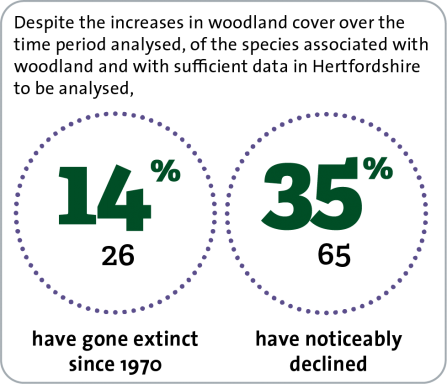
However, while the area of woodland has increased, species associated with this habitat continue to decline. The declines were linked with changes in the structure and condition of established woodlands due to introduced tree diseases, increased browsing pressure by deer, human recreational disturbance, changes to management practices and neglect.
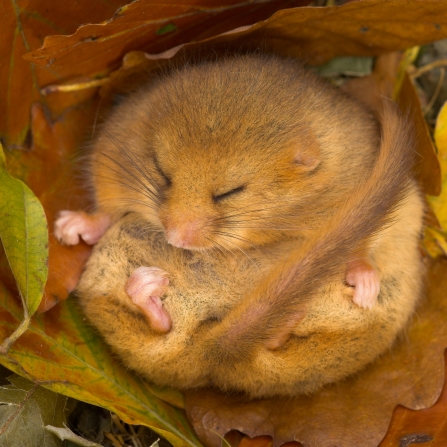
Dormouse © Danny Green/2020VISION
Species that have declined in woodlands include hazel dormouse and marsh tit. The pearl-bordered fritillary butterfly and the iconic nightingale have been lost from the county altogether.

In Hertfordshire, much of our wetland is the result of gravel extraction, leaving behind water-filled gravel pits throughout the lower River Lea and Colne valleys. Some of these have turned into fantastic wildlife havens, such as Amwell or Stocker's Lake, but many have remained relatively simple habitats.
There is also a wide variety of important smaller wetland features found in both river valleys and drier sites. These are very fragile and threatened by lowered groundwater levels due to abstraction and climate change. Helping sites to adapt to these changes is a high priority in Hertfordshire for wetland conservation.
Wetlands cover less than one per cent of the total county area, only about one-third of the national average. Many of the pressures currently affecting the distribution and quality of wetlands relate to historical drainage, modification of floodplains and groundwater abstraction.

Hertfordshire has a national and international responsibility for protecting its special chalk rivers, which have a unique ecology due to their clean, mineral-rich water and consistent flows. A high proportion of the world's global numbers of chalk streams can be found in the South-East of England, specifically in Hertfordshire.

With over 90,000 hectares, more than half of our county area is arable farmland - not including improved grassland - much more than the national average. Farmland is a relatively poor habitat for wildlife and agricultural management has been cited as the single biggest driver of biodiversity loss in the UK.

While less than three per cent of Hertfordshire Species of Conservation Concern are directly associated with arable farming, many other species can be found in hedges, ponds and other habitat features found in farmland. Farmland wildlife has been suffering from intensification and a drive to maximise yields such as a change from spring to winter sown cereals, larger machinery, herbicide and pesticide use, and more specialised farming systems. Birds such as the grey partridge and the stone curlew have declined, the latter of which has become extinct in the county.

With around 27,000 hectares, our towns and cities cover a larger area than the national average - 17 compared to 7 per cent - which makes urban conservation efforts even more necessary here. Most of the wildlife associated with towns and cities does not actively seek out human proximity but rather survives in the green patches that are our parks, gardens, allotments, churchyards and road verges.
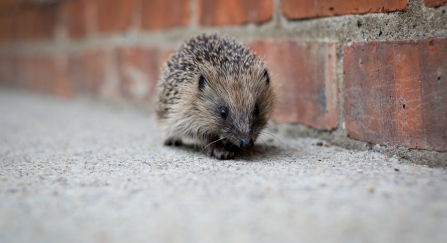
© Tom Marshall

Wildlife is struggling globally, nationally and also locally. This report highlights what has been lost over the last 50 years and just how many species are now threatened with extinction in Hertfordshire. If we want to halt and reverse the decline, it is important to act now and focus on reinstating conservation management of existing habitats as well as creating and connecting habitats across the county.
Working in partnership
It is not too late to save our wildlife, but the Trust is just one part of the story told here. Only by working together are we able to create a wilder Hertfordshire where people and wildlife thrive together. This task involves landowners farmers, local authorities, businesses, individuals and communities.
While this report makes for unhappy reading in most parts, it is important to remember that we can make more space for wildlife in our day-to-day lives and, if we work in partnership, we can reverse the fortunes of wildlife in the county.Herts & Middlesex Wildlife Trust
A huge thank you goes to everyone who has contributed to this milestone report, in particular the many volunteer recorders who have spent hours over many years surveying wildlife and who helped analyse the data. Without the support of our partners, members and volunteers the Trust simply could not continue our work. This report is just the beginning. The future undoubtedly holds many challenges and we are looking forward to facing these alongside you and others that believe in a wilder future for Hertfordshire.
Read the full report below
Get involved and do your bit for wildlife
National State of Nature reports
The national State of Nature reports are a periodic healthcheck on how the UK’s wildlife is faring. They are put together using wildlife data from a group of 50 conservation organisations. Download the national State of Nature reports below.

